Google Ads Campaign – Complete Step-by-Step Guide
Reach new customers and grow your business with Google Ads Campaign. These guides are designed to get you up to speed quickly, so you can create successful ads and turn your advertising investment into revenue. Just pick the path that’s right for you to begin!
However, before you can get started, you’ll need to know how to use Google Ads Campaign effectively in order to maximize the return on investment from your advertising spend and avoid making mistakes. This Google Ads guide for beginners will take you through everything that you need to know in Google Ads, from start to finish. We’ll cover everything, from why Google Ads is worth your time and money to a step-by-step tutorial to getting started and maximizing your potential.
That’s why I’m going to walk you through 8 steps to set up a campaign even if it’s your first time logging into Google Ads .
1. Define your objective
Each campaign begins by choosing a goal. This goal focuses your campaign on delivering a specific outcome:
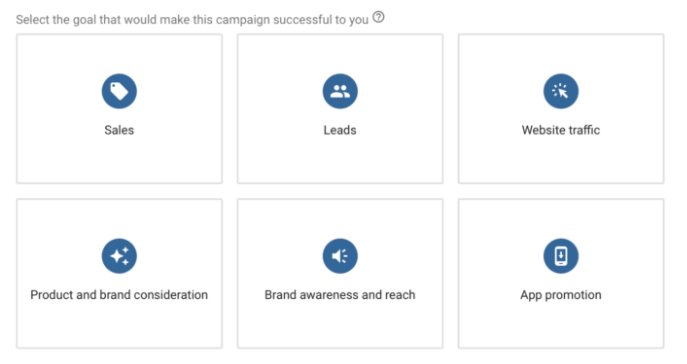
Using a goal eases your decision-making when you create a campaign in Google Ads by guiding you to the specific features designed to help your campaign succeed. When you create a campaign, you can select a goal. The goal you select should align with the main thing you want to get from your campaign, for example, Sales or Website traffic. After selecting a goal, you’ll see relevant, recommended features and settings to help you attain the results that matter most to your business.
Here is a complete list of advertising goals and corresponding campaign types included in the workflow.
Goal: Sales
Campaign types: Search, Display, Shopping
Goal: Leads
Campaign types: Search, Display, Shopping, Video
Goal: Website traffic
Campaign types: Search, Display, Shopping, Video
Goal: Product and brand consideration
Campaign types: Display, video
Goal: Brand awareness and reach
Campaign types: Display, Video
Goal: App promotion:
Campaign type: Universal App
Google Ads will also surface other relevant suggestions based on advertising goals, when applicable. Other suggestions may include campaign subtypes, ad formats, ad extensions, and bidding focus.
2. Choose A Campaign Type
After selecting a goal, you’ll notice a list of recommended campaign types to reach it. Your campaign type determines where your ads will show and what they’ll look like. You’ll choose a campaign type based on your marketing goals, brand strategy, and how much time you can invest.
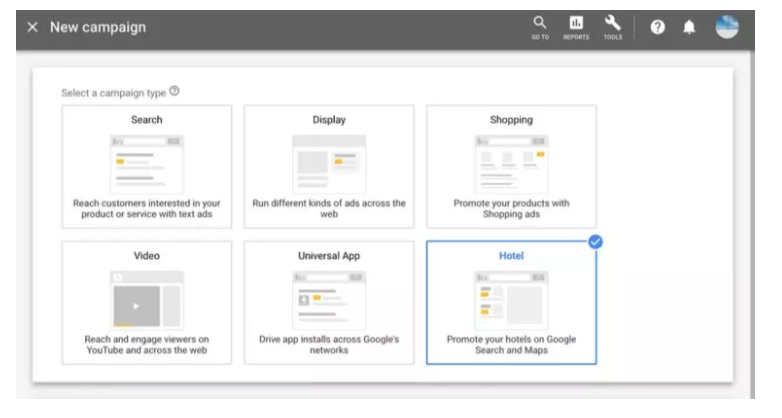
- Search campaigns: Text ads on search results
Search campaigns are text ads on search results that let you reach people while they’re searching on Google for the products and services you offer. It’s great for driving sales, leads, or traffic to your website, as you can show your ads to people actively searching for your products and services.
- Display campaigns: Image ads on websites
Display campaigns let you reach a relevant audience with visually engaging ads as they browse millions of websites, apps, and Google-owned properties, such as YouTube, to achieve your marketing objectives. Display campaigns are a great way to expand your reach and stay top of mind with an audience beyond just Google Search.
- Video campaigns: Video ads on YouTube
Video campaigns let you show video ads on YouTube and other websites. Some Video campaign types can help you boost general awareness of your brand. Others are designed to drive conversions or get people to shop on your website.
- Shopping campaigns: Product listings on Google
Shopping campaigns are product listings that are ideal if you’re a retailer looking to sell your product inventory. Shopping ads appear on search results and the Google Shopping tab. Store owners can also use local inventory ads to promote products available at their physical locations.
- App campaigns: Promote your app on many channels
App campaigns help you find new app users and increase sales within your app. This campaign type uses information from your app to automatically optimize ads across Search, Play, YouTube, Discover, and over 3 million sites and apps.
- Local campaigns: Promote locations on many channels
Local campaigns help you bring people to your physical stores and venues. Your ads will be automatically optimized to appear across Search, Display, Google Maps, and YouTube.
- Smart campaigns: Automate your campaigns
Smart campaigns are the easiest way to automate your campaigns and get your ads up and running. Enter your business information and create a few ads and Google finds the best targeting to get you the most for your time and money.
3. Set A Budget
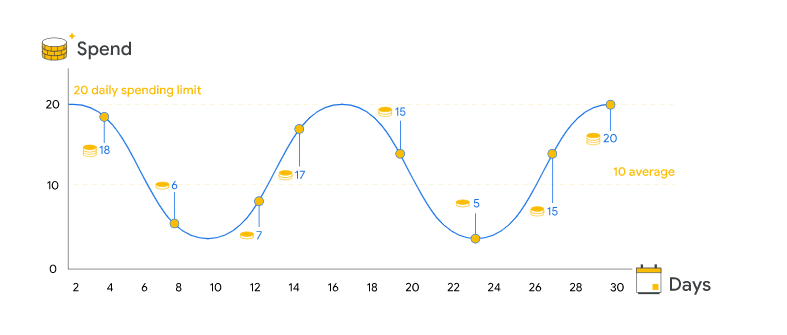
Managing your budget will help you control your advertising costs and get the most out of your Google Ads investment. Google will optimize your campaign spend for days of the month when you’re more likely to get clicks and conversions. This means that on some days we might not meet your average daily budget, and on others we might exceed it. But you’ll never pay more than your daily spending limit in a given day, or more than your monthly spending limit in a given month.
Google will optimize your campaign spend for days of the month when you’re more likely to get clicks and conversions, like when search traffic is higher or when we predict higher ROI for your ads. This means that on some days you might not reach your average daily budget, and on others you might exceed it.
Note: Your budget report can help you understand how much you are projected to pay at the end of the month, as well as how past changes to your average daily budget impacted your performance and spend limit.
4. Choose Your Bidding
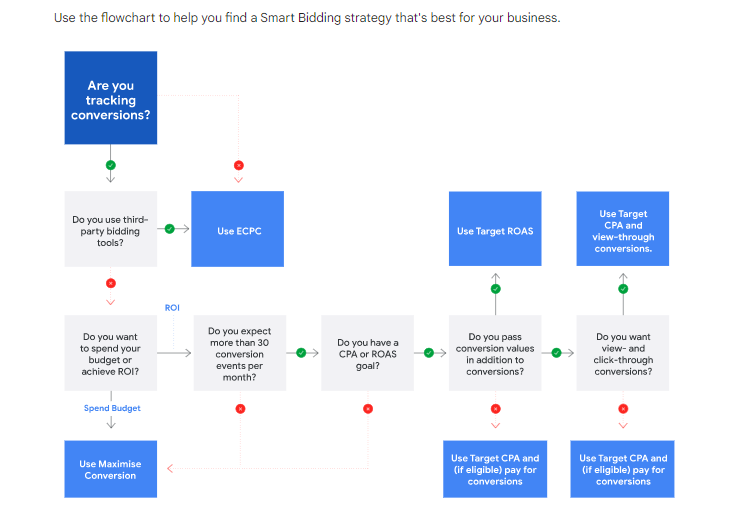
Each bid strategy is suited for different kinds of campaigns and advertising goals. For the purposes of bidding, you’ll want to consider five basic types of goals, along with your current campaign settings.
- If you want customers to take a direct action on your site, and you’re using conversion tracking, then it may be best to focus on conversions. Smart Bidding lets you do that.
- If you want to generate traffic to your website, focusing on clicks could be ideal for you. Cost-per-click (CPC) bidding may be right for your campaign.
- If you want to increase brand awareness focusing on impressions may be your strategy. You can use cost-per-thousand viewable impressions (vCPM) bidding to put your message in front of customers.
- If you run video ads and want to increase views or interactions with your ads, you can use cost-per-view (CPV) or cost-per-thousand impressions (CPM) bidding.
- If you run video ads and your goal is to increase product or brand consideration you can use cost per view (CPV).
- Smart Bidding is a set of automated bid strategies that uses machine learning to optimize for conversions or conversion value in each and every auction
5. Add Extensions To Your Ads
Extensions expand your ad with additional information, giving people more reasons to choose your business. Extension formats include call buttons, location information, links to specific parts of your website, additional text, and more.
Extensions give your ad greater visibility on the search results page. This means you tend to get more value from your ad. Extensions often increase your total number of clicks and can give people additional interactive ways of reaching you, such as through maps or calls.
There are 2 types of extensions
Manual Extensions: Manual extensions require a bit of set up while automated extensions are added automatically when Google Ads predicts these will improve your ad performance.
Automated Extensions: Automated extensions can give you more robust ads and more chances to win new customers. When an automated extension is predicted to improve your ad’s performance, Google Ads automatically creates and displays it below your ad.
6. Create ad groups
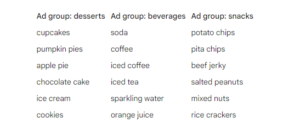
An ad group contains one or more ads that share similar targets. You set a bid, or price, to be used when an ad group’s keywords trigger an ad to appear. This is called a cost-per-click (CPC) bid. You can also set prices for individual keywords within the ad group. Use ad groups to organize your ads by a common theme, such as the types of products or services you want to advertise.
Many advertisers find it helpful to base their ad groups on the sections or categories that appear on their website. For example, let’s say you sell desserts, beverages, and snacks on your website.
7. Select Your Targeting
Your audience is who you want your ads to reach. You can reach people based on:
- Who they are
- Their interests and habits
- What they’re actively researching
- People who’ve already interacted with your ads, website, or app and may return
Targeting helps define how narrow or broad the audience for your ads can be. Without any targeting, your ads will have the widest possible reach. Targeting your ads lets you hone in on the specific customers who are interested in what you have to offer.
Common forms of targeting include keywords, audiences, locations, topics, devices, and re marketing. Specific targeting is only available in some campaign types.
Examples
If you run a dog daycare center in San Francisco, California, you could add the keyword “doggie daycare,” and “San Francisco and nearby cities,” as the target location for your Google Ads campaign. Then, when people in San Francisco type “doggie daycare” on Google, they could see your ad next to the search results.
8. Set Up Conversions
Conversion tracking can help you track the actions that you want customers to take on your website. They can significantly improve your ability to assess the effectiveness of your ads, targeting, and overall campaigns.
You can use conversion tracking to track the following kinds of actions:
- Website actions: Purchases, sign-ups, and other actions that customers complete on your website.
- Phone calls: Calls directly from your ads, calls to a phone number on your website, and clicks on a phone number on your mobile website.
- App installs and in-app actions: Installs of your Android or iOS mobile apps, and purchases or other activity within those apps.
- Import: Customer activity that begins online but finishes offline, such as when a customer clicks an ad and submits a contact form online, and later signs a contract in your office.
- Local actions: Actions that are counted whenever people interact with an ad that’s specific to a physical location or store .
Need Help with Google Ads?
We specialize in creating and managing Google Ads campaigns for small businesses .
Contact us on bhushanwable@gmail.com, +91 8796090783 (WhatsApp) for Google Ads management

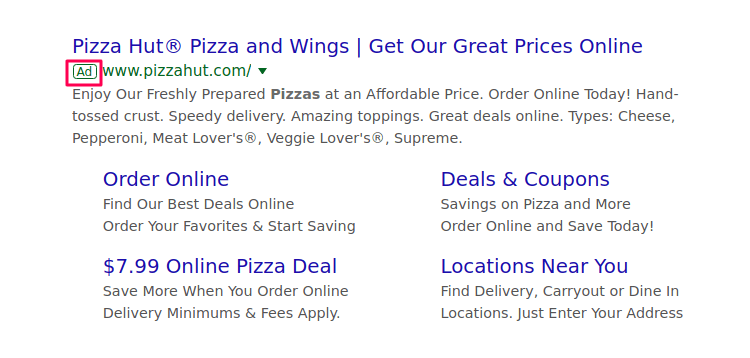

Write a Comment